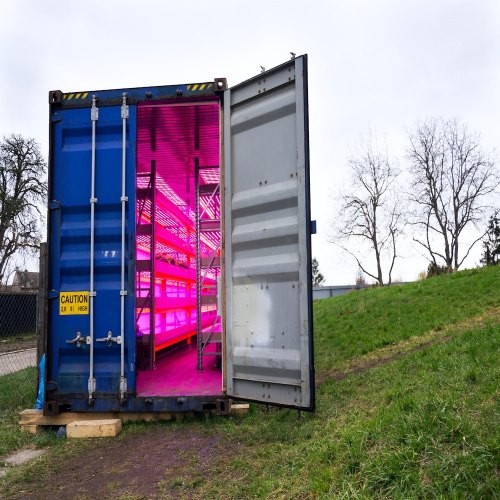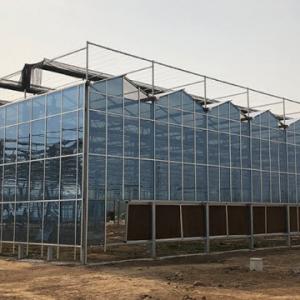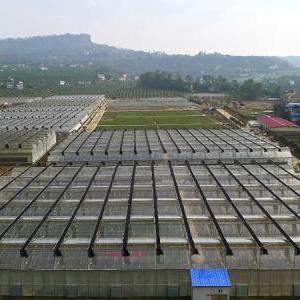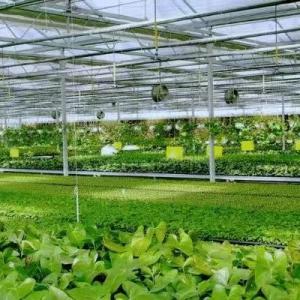Grow Vegetables in Shipping Containers
Growing vegetables in a shipping container is possible, but it requires a tightly managed ecosystem. Just like humans, plants and animals are most productive under certain conditions.
Container Greenhouses
A container greenhouse is a unique way to grow fresh vegetables and herbs. These structures can be used in harsh climates and remote locations that cannot support traditional farming. The optimal conditions inside the containers offer high yields, which can be enough to serve many households. This type of growth also promotes healthy living among urban populations. The container greenhouse is equipped with LED lights, fertilizer mixers, and climate control.
Selecting the Right Shipping Container
When choosing a shipping container for vegetable gardening, there are a few key factors to consider. Look for containers that are clean, structurally sound, and made of non-toxic materials. Ensure that the container has proper drainage holes or the ability to add them. Additionally, consider the size and depth of the container, as different vegetables require varying amounts of space for root development.
Preparing the Container for Vegetable Gardening
Before you start planting, it is essential to prepare the container properly. Thoroughly clean and sanitize the container to remove any potential contaminants. Next, add a layer of gravel or broken pottery at the bottom to facilitate drainage. Fill the container with a high-quality potting mix or a blend of compost, peat moss, and perlite for optimal plant growth.
Choosing the Perfect Location
Finding the right location is crucial for the success of your container garden. Select a spot that receives adequate sunlight for at least six to eight hours a day. Ensure proper air circulation to prevent the buildup of moisture and reduce the risk of fungal diseases. If space is limited, consider utilizing balconies, rooftops, or windowsills to maximize your growing area.

Essential Tools and Materials
To effectively maintain your container garden, you will need a few essential tools and materials. These include gardening gloves, hand trowels, pruners, watering cans or hoses, fertilizers, and organic pest control options. Having these items readily available will make your gardening tasks more efficient and enjoyable.
Selecting the Ideal Vegetables for Container Gardening
Not all vegetables thrive in container gardens, so it's important to choose suitable varieties. Opt for compact and dwarf varieties that are well-suited to confined spaces. Some excellent choices for container gardening include cherry tomatoes, lettuce, radishes, peppers, herbs, and dwarf varieties of beans and cucumbers. Consider your climate and the specific requirements of each vegetable before making your selection.
Watering and Irrigation Systems
Maintaining proper moisture levels is crucial for container gardening success. Regularly check the moisture levels in the soil and water the containers as needed. Avoid overwatering, which can lead to root rot, and underwatering, which can cause plants to wilt. Consider installing an irrigation system, such as drip irrigation or self-watering containers, to automate the watering process and ensure consistent moisture levels.
Providing Adequate Lighting
While most vegetables require ample sunlight, some containers may not receive direct sunlight throughout the day. Supplemental lighting can be beneficial, especially in areas with limited natural light. Use fluorescent or LED grow lights to provide the necessary light spectrum for plant photosynthesis. Position the lights at the appropriate distance above the plants and adjust the duration based on the specific light requirements of each vegetable.
Maintaining Optimal Temperature and Humidity
Temperature and humidity play a vital role in the growth and development of container-grown vegetables. Most vegetables thrive in temperatures between 60-75°F (15-24°C). Avoid exposing the containers to extreme temperature fluctuations or frost. Maintain adequate airflow to prevent high humidity levels, which can promote fungal diseases. Consider using shade cloth or mulching to regulate temperature and humidity levels.

Pest and Disease Control
Container gardens are not immune to pests and diseases. Implement preventive measures to protect your plants. Regularly inspect the plants for signs of pests such as aphids, caterpillars, or mites. Introduce natural predators like ladybugs or use organic pest control methods. Ensure proper spacing between plants to promote airflow and reduce the risk of diseases. Remove any infected or damaged plant parts promptly to prevent the spread of diseases.
Pruning and Training Techniques
Some vegetables, such as tomatoes and vining plants, benefit from pruning and training techniques. Prune the plants to remove excessive foliage and redirect energy toward fruit production. Use stakes, trellises, or cages to support and train plants that tend to sprawl or climb. Regularly monitor the plant’s growth and adjust the supports accordingly to maintain proper structure and maximize space utilization.
Harvesting and Enjoying Your Bounty
One of the most rewarding aspects of container gardening is harvesting your homegrown vegetables. Monitor the plants regularly and harvest the vegetables at their peak ripeness. This ensures the best flavor and nutritional value. Use sharp pruning shears or scissors to harvest the product without damaging the plants. Enjoy the freshness and satisfaction of incorporating your harvest into delicious meals.
Troubleshooting Common Issues
Container gardening may encounter various challenges, but most issues can be resolved with proper care and attention. Monitor for common problems like nutrient deficiencies, overwatering, pests, and diseases. Adjust watering and fertilization practices as needed. Seek advice from local gardening communities or consult reputable gardening resources to troubleshoot specific issues you may encounter.





